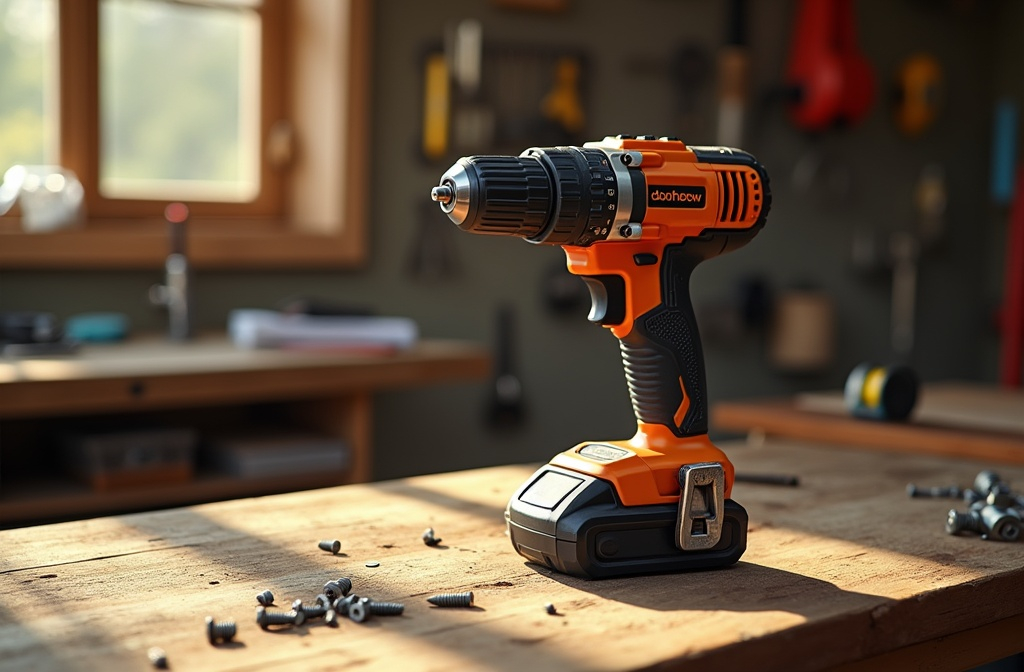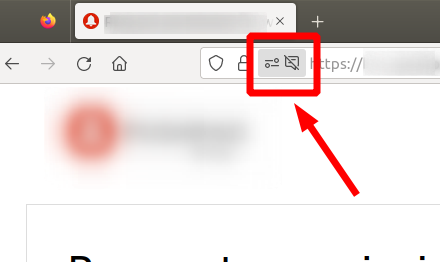
Types of Portable Power Tools
Portable power tools include drills and drivers for holes and screws, various saws for cutting, and sanders and grinders for smoothing surfaces. Nailers and staplers quickly join materials together, while routers and planers shape and finish edges. Specialty tools like heat guns and oscillating multi-tools add versatility to your projects. You can choose from cordless tools for mobility or corded options for constant power. By exploring further, you can learn more about their specific uses and features.
Key Takeaways
- Portable power tools include drills, saws, sanders, grinders, nailers, and specialty tools designed for various tasks and materials.
- Drills and drivers are versatile for drilling and driving, available in both corded and cordless models.
- Saws vary in type, such as circular, jigsaws, and miter saws, each suited for specific cutting needs and materials.
- Sanders and grinders enhance surface finishing and material shaping, with options for different applications and speed controls.
- Cordless tools offer mobility, while corded tools provide consistent power, catering to various user preferences and project requirements.
Drills and Drivers
When you're tackling a project that involves drilling or driving, understanding the various tools available can make a significant difference. Drill drivers combine drilling and driving functions, making them versatile for working with wood, plastic, and thin metals. You can choose between corded and cordless models, typically with adjustable clutch settings and common chuck sizes of 3/8-inch and 1/2-inch. Hammer drills are more powerful and ideal for masonry, using rotational and hammering action, but they require special masonry bits. Upgrading your toolbox with modern options enhances your efficiency and satisfaction when completing projects. Impact drivers excel at driving screws and bolts, utilizing high torque and a compact design for tight spaces. Finally, rotary hammer drills offer heavy-duty performance for concrete, with multiple modes for different tasks. Knowing these options helps you choose the right tool for your project, especially since modern cordless drills allow for greater mobility without sacrificing power.
Saws
When it comes to portable power tools, saws are essential for various cutting tasks. You've got options like circular saws for straight cuts, jigsaws for curves, and reciprocating saws for demolition work. Choosing the right saw depends on the materials you'll be working with and the type of cuts you need to make. For example, cordless saws offer portability and convenience, making them ideal for confined areas. Cordless jigsaws are particularly beneficial for elevating DIY projects and enhancing efficiency in home improvements.
Types of Saws
Saws are essential tools for a variety of cutting tasks, and there are several types designed to meet specific needs. Here's a quick overview of the most common types of saws you might encounter:
| Type of Saw | Ideal Use | Key Features |
|---|---|---|
| Circular Saws | Straight cuts | Rotating blade, bevel cuts |
| Reciprocating Saws | Rough cuts | Back-and-forth motion |
| Jigsaws | Curved and straight cuts | Narrow blade, orbital action |
| Miter Saws | Angled cuts | Stationary, laser guides |
Each type has its unique advantages, whether you're cutting wood, metal, or plastic. Understanding these options helps you choose the right saw for your project and guarantees you achieve the best results. For optimal performance, ensure you select blades with the appropriate TPI (teeth per inch) for the material being cut. Additionally, employing proper safety features while using circular saws is crucial to prevent accidents and injuries.
Choosing the Right Saw
How can you choose the right saw for your project? First, consider your project requirements and the material you'll cut. Decide between corded and cordless options based on power needs. Pay attention to blade type and specifications, such as teeth per inch (TPI), as this affects cut quality and speed. You'll want a saw with a cutting capacity that fits your task and ergonomics that guarantee comfort during use. Proper selection contributes to the success of your project, as a saw like the WORKPRO 20V Cordless Mini Circular Saw can offer high-performance motor capabilities. Safety features like blade guards and kickback prevention are vital, so prioritize these. Don't forget to maintain your saw properly, including regular cleaning and using genuine replacement parts. By evaluating these factors, you can confidently select a saw that meets your needs and enhances your project experience.
Sanders and Grinders
Portable power tools, particularly sanders and grinders, play an essential role in various projects, whether you're a professional tradesperson or a DIY enthusiast. Sanders come in several types, like belt sanders for quick material removal and random orbital sanders for achieving smooth finishes. You'll find palm sanders perfect for detail work and disc sanders ideal for shaping edges. Belt sanders are especially popular for sanding large and flat surfaces, making them a valuable addition to any tool collection. Grinders also offer versatility, with angle grinders for cutting, grinding, and polishing. Die grinders serve precision tasks in tight spaces. Key features of these tools include variable speed control and dust collection systems, enhancing your work efficiency. Popular brands like DeWalt, Bosch, and Makita guarantee you can find the right tool that meets your needs and preferences.
Nailers and Staplers
Nailers and staplers are essential tools in both construction and crafting, making projects faster and more efficient. You'll find various types, like framing nailers for building structures, finishing nailers for trim, and brad nailers for delicate woodworking. Cordless nail guns are particularly popular due to their flexibility and ease of use, allowing DIY enthusiasts to tackle diverse tasks without being tethered to a power source. Roofing nailers help with shingle installation, while pin nailers offer precision for fine work. These tools come in different power sources: pneumatic nailers use compressed air, cordless ones run on rechargeable batteries, and electric versions plug into outlets. Key features include depth adjustment, jam-clearing systems, firing modes, and safety mechanisms. Staplers also play an essential role, with heavy-duty options for construction and upholstery staplers for fabric projects. Each tool helps you create with confidence and ease, bringing your ideas to life.
Routers and Planers
Routers and planers are essential tools in woodworking, helping you achieve smooth finishes and precise cuts. Here's a quick overview of what these tools offer:
- Types of Routers: Fixed base for stability, plunge for adjustable depth, combo for flexibility, and trim routers for detailed work.
- Router Features: Variable speed control for adaptability, soft start to reduce torque, electronic feedback for consistency, and dust collection for cleanliness. Additionally, some routers like the Beryl AX offer advanced Wi-Fi 6 technology, enhancing your connectivity while you work.
- Types of Planers: Benchtop for portability, stationary for power, hand-held for flexibility, and jointer-planer combos for versatility.
- Planer Features: Cutting widths of 12-20 inches, a maximum depth of cut of 1/8 inch, efficient feed rates, and effective dust collection.
With routers and planers, you can enhance your woodworking projects to new heights.
Specialty Tools
When you're looking to tackle specialized tasks in woodworking or home improvement, specialty tools can make all the difference. Heat guns are perfect for stripping paint, thawing pipes, and can reach temperatures from 100°F to 1,200°F, making them a versatile tool in various applications. Oscillating multi-tools are versatile for cutting, sanding, and scraping, operating at 11,000 to 20,000 oscillations per minute. Rotary tools excel in precision work, spinning at speeds from 5,000 to 35,000 RPM, while angle grinders efficiently cut and grind materials like metal and concrete. Finally, power staplers and nailers streamline fastening tasks, available in pneumatic, electric, and battery-powered models. Each tool brings unique advantages, allowing you to approach specialized projects with confidence and efficiency, making tool selection crucial for achieving optimal results.
Cordless vs. Corded Tools
Choosing between cordless and corded tools can greatly affect your woodworking and home improvement projects. Here's a quick breakdown to help you decide:
- Cordless Tools:
- Increased portability and mobility.
- No cord management or tripping hazards.
- Can be used in remote locations without power.
- Often lighter and more compact.
- Ideal for both DIY enthusiasts and professionals alike due to their versatility.
- Corded Tools:
- Unlimited runtime with constant power supply.
- Generally more powerful than cordless options.
- Lower initial purchase cost.
- Consistent performance in all temperatures. Additionally, corded tools often have a higher power output suitable for prolonged usage, making them ideal for heavy-duty tasks.
Consider your project type, power access, budget, and whether you prioritize portability or constant power. Each option has its strengths and weaknesses, so choosing wisely can enhance your efficiency and enjoyment in your tasks.
Safety Tips for Using Portable Power Tools
Using portable power tools can significantly enhance the efficiency of your projects, whether you opt for cordless or corded options. To guarantee safety, always wear proper personal protective equipment (PPE) like safety glasses, hearing protection, and gloves. Before using any tool, inspect it for damage and verify that all safety features are functional. Examine tools, cords, and hoses to ensure they are in good condition and suitable for use. Additionally, consider the essential safety gear required for specific tools to prevent injuries during operation. Maintain a firm grip and stable footing while working, and avoid carrying tools by the cord. When changing accessories, disconnect the tool first. Keep your workspace organized, free from clutter, and well-lit. Use tools with three-pronged plugs and avoid operating them in wet conditions. By following these safety tips, you'll not only protect yourself but also promote a safer environment for everyone around you.
Maintenance and Care of Portable Power Tools
To keep your portable power tools in ideal condition, regular maintenance is essential. Following a consistent care routine not only prolongs their lifespan but also guarantees safety during use. Here are some key maintenance steps you should take:
- Regular Cleaning: Remove dust and debris after each use, clean vents, and wipe down exteriors. Proper care is crucial for optimal functionality and performance. Additionally, keeping tools clean can enhance power drill performance, preventing overheating and wear.
- Lubrication: Apply appropriate lubricant to moving parts, avoiding over-lubrication to prevent debris attraction.
- Blade/Bit Maintenance: Sharpen or replace dull blades, and check for damage regularly.
- Electrical Care: Inspect cords for fraying, keep batteries charged, and test tools for proper function.
Frequently Asked Questions
What Are the Key Benefits of Using Cordless Power Tools?
Using cordless power tools gives you freedom to work anywhere without cords getting in your way. You'll enjoy improved performance, enhanced safety, and convenience, all while saving money and elevating your productivity on every project.
How Do I Choose the Right Power Tool for My Project?
To choose the right power tool for your project, consider your tasks, workspace, and frequency of use. Evaluate features, portability, and long-term value to guarantee you're making a smart, reliable investment for your needs.
What Safety Gear Should I Wear When Using Power Tools?
When using power tools, you should wear safety glasses, hearing protection, and cut-resistant gloves. Don't forget steel-toed boots and long sleeves to protect yourself. Prioritizing safety makes you part of a responsible community.
Can I Use Power Tools Indoors and Outdoors Interchangeably?
You can use power tools indoors and outdoors, but it's essential to take into account their design and safety features. Always check for specific applications, and prioritize ventilation and protective gear to guarantee your safety in both environments.
How Do I Store Power Tools to Extend Their Lifespan?
To extend your tools' lifespan, clean and inspect them before storage. Store in a dry, temperature-controlled area, keep them organized, and perform regular maintenance to guarantee they remain in top condition for your next project.
Conclusion
To summarize, understanding the various types of portable power tools can greatly enhance your projects. From drills and saws to nailers and specialty tools, each serves a unique purpose. Remember to choose between cordless and corded options based on your needs and always prioritize safety when using these tools. Proper maintenance will extend their lifespan and guarantee efficient operation. With the right knowledge and care, you can achieve excellent results in your DIY tasks or professional projects.

